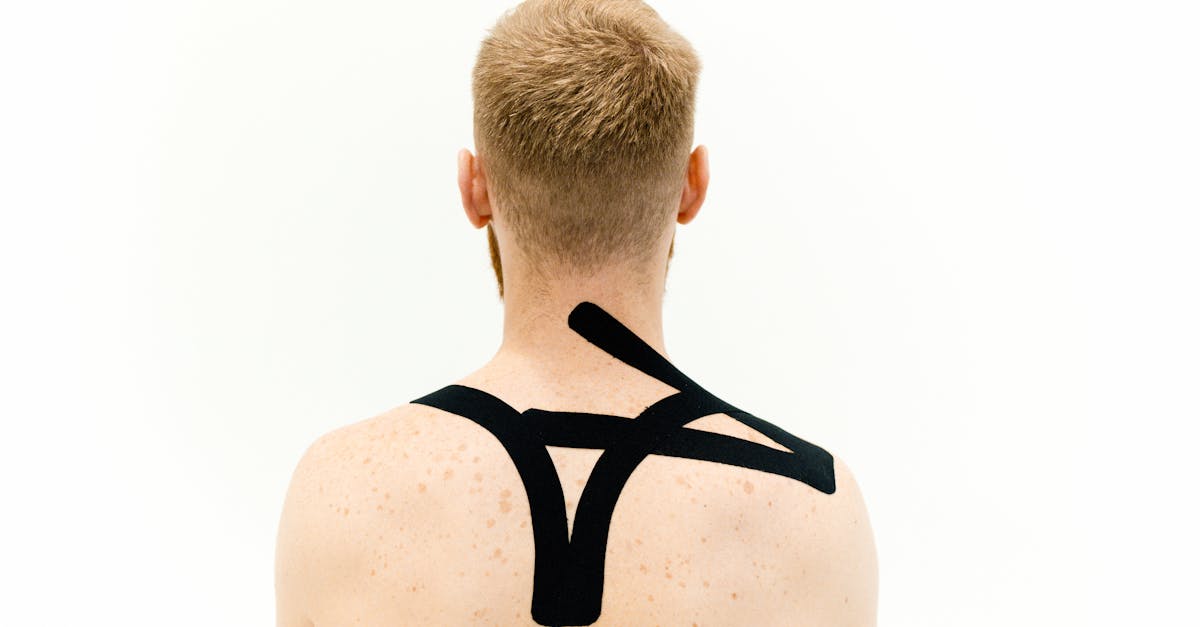In Short, shockwave therapy is an innovative solution for alleviating shoulder pain that effectively addresses inflammation and promotes healing. This non-invasive treatment targets conditions like rotator cuff tendinitis and shoulder impingement, providing numerous benefits including reduced pain and improved mobility. Through the application of acoustic pressure waves, this method stimulates healing processes in the affected areas, significantly enhancing recovery while being both safe and efficient. |
Shoulder pain is a common affliction that can significantly affect daily life. One effective treatment option is shockwave therapy, which utilizes acoustic pressure waves to alleviate pain and reduce inflammation in the shoulder area. This non-invasive procedure promotes healing by targeting conditions such as rotator cuff tendinitis and shoulder impingement. By stimulating the body’s natural healing processes, shockwave therapy can enhance mobility and improve overall shoulder health.

Experience Balance and Comfort with Pulse Align
At Pulse Align, we believe that achieving optimal well-being should be a gentle journey. Our innovative, non-invasive method uses subtle, imperceptible pulses to help restore your body’s natural balance and posture. This approach fosters muscle tone symmetry, leading to a wonderful sense of comfort and alleviating tension that many individuals experience in their daily lives.
Embrace Natural Well-Being
Pulse Align is dedicated to providing a supportive environment focused on the body’s innate ability to recalibrate itself. Rather than targeting specific discomforts directly, our techniques encourage a natural return to equilibrium, which often leads to enhanced ease in movement and improved overall posture. Many clients report feeling a noticeable difference as their bodies align with their true potential, allowing them to enjoy life more fully.
A Personalized Approach to Wellness
Our commitment to individualized care sets Pulse Align apart. Clients from various backgrounds, including families, children, and expecting mothers, find great value in our services. Testimonials often highlight significant improvements in neck and back tension, postural balance, and overall well-being, all achieved through our gentle approach. The feedback we receive emphasizes the supportive role we play in our clients’ wellness journeys, often leading to success in their everyday lives.
Discover Pulse Align Near You
We invite you to explore the world of Pulse Align and discover how our safe, family-friendly approach can fit into your wellness routine. Whether you’re in La Prairie, Mont-Royal, or Terrebonne, you can find a nearby location to begin your path to enhanced well-being. Visit our website today to learn more about our services and book a consultation—your journey toward better balance awaits!
Medical Disclaimer
The information on this site complements, but does not replace, medical care. Clients should remain under the supervision of their healthcare team for any condition. Any benefits experienced are attributed to the body’s natural ability to restore balance.
- Definition: Non-invasive treatment using acoustic waves.
- Pain Relief: Stimulates endorphin release for immediate comfort.
- Reduces Inflammation: Effectively diminishes swelling in shoulder conditions.
- Common Conditions: Addresses rotator cuff tendinitis and shoulder impingement.
- Previous Treatments: Offers alternative when traditional methods fail.
- Mild Discomfort: Typically well-tolerated with minimal side effects.
- Restores Mobility: Improves range of motion for frozen shoulder cases.
- Safe for Most: Non-surgical option suitable for various patients.

Understanding Shoulder Pain and Inflammation
Shoulder pain can significantly impact daily life, often stemming from conditions that cause inflammation. One effective treatment option is shockwave therapy, which utilizes acoustic pressure waves to reduce inflammation and promote healing in the shoulder. This article explores how shockwave therapy can calm inflammation, its benefits, and considerations for those suffering from shoulder pain.
What is Shockwave Therapy?
Shockwave therapy, also known as Extracorporeal Shock Wave Therapy (ESWT), is a non-invasive treatment that delivers high-energy sound waves to injured areas of the body, including the shoulder. These sound waves stimulate healing by increasing blood circulation and reducing inflammation. For individuals suffering from conditions such as rotator cuff tendinitis or shoulder impingement, shockwave therapy can provide significant relief.
Mechanism of Action
The mechanism behind shockwave therapy involves triggering a biological response in the body. The application of acoustic waves increases metabolism at the cellular level and promotes the release of endorphins, which serve as natural painkillers. Furthermore, the treatment can stimulate the regeneration of tissues and reduce inflammation by breaking down calcified deposits that may be contributing to pain.
Benefits of Shockwave Therapy for Shoulder Pain
Shockwave therapy offers numerous benefits for those suffering from shoulder pain. It is a non-surgical treatment method that can effectively alleviate pain, enhance shoulder function, and improve mobility. By decreasing inflammation, this therapy not only provides immediate relief but also addresses the underlying issues, facilitating long-term recovery.
Effective for Various Conditions
This treatment is particularly beneficial for various painful shoulder conditions, including:
- Rotator cuff disease – Shockwave therapy can help manage pain and inflammation associated with rotator cuff injuries.
- Frozen shoulder – Individuals with limitations in shoulder mobility can experience noticeable improvements through this therapy.
- Tendonitis – Effective in treating chronic tendon inflammation, shockwave therapy promotes healing and restores normal function.
Considerations and Limitations
While shockwave therapy is generally safe, it is essential for patients to consult with healthcare professionals to determine if this treatment suits their specific condition. Certain factors may contraindicate its use, such as pacemakers or being on blood thinners. A thorough medical evaluation is necessary to ensure safety and effectiveness.
What to Expect During Treatment
During the procedure, a hand piece is applied to the affected shoulder, delivering shockwaves at a consistent frequency. Patients may experience mild discomfort during the treatment, but it is typically well-tolerated. Multiple sessions may be recommended based on individual response to therapy.
Embracing a Holistic Approach
In addition to shockwave therapy, it’s important to incorporate holistic practices to enhance overall shoulder health. Techniques such as proper posture, tailored exercise programs, and lifestyle modifications can work synergistically with shockwave therapy. Emphasizing the importance of these practices aligns with the principles of Pulse Align, which advocates for a balanced approach to neuromuscular health, symmetry, and nervous system recalibration.
| Aspect | Focus on Wellness |
| Technique | Utilizes acoustic pressure waves to promote relaxation and ease discomfort. |
| Inflammation Relief | Encourages the body’s natural healing processes to reduce inflammation. |
| Non-invasive | Offers a gentle approach that may enhance comfort without surgical options. |
| Recovery Time | Aids in a quicker recovery allowing for a return to active living. |
| Natural Endorphin Release | May stimulate the release of endorphins, contributing to a sense of well-being. |
| Mobility Improvement | Supports the restoration of mobility, helping to reconnect with physical activities. |
| Holistic Approach | Integrates body recalibration techniques, promoting overall wellness. |
| Personal Empowerment | Encourages individuals to actively engage in their wellness journey. |
| Adjustable Parameters | Allows for personalized adjustments to maximize individual comfort. |
| Community Awareness | Promotes awareness around shoulder health and preventative practices. |
Empowering Wellness Journeys Through Shockwave Therapy
Clients from diverse regions like La Prairie and Mont-Royal have shared transformative experiences related to their shoulder pain relief after engaging with Pulse Align. Many have expressed how the unique application of shockwave therapy has enhanced their body’s natural mechanisms for recalibration and recovery. These individuals have reported feeling significant improvements, reclaiming comfort and mobility in their daily lives.
The approach at Pulse Align emphasizes holistic recovery, which resonates strongly with clients in Terrebonne and Les Escoumins. By understanding the body’s needs and deploying advanced technology, clients undergoing treatment have noted a profound reduction in inflammation and pain associated with conditions such as rotator cuff tendinitis and shoulder impingement. Their feedback highlights not just physical relief but also an uplift in their overall well-being.
Individuals from Saint-Jérôme and Châteauguay praise how Pulse Align creates a supportive environment that works synergistically with local healthcare teams. This collaboration ensures that clients feel empowered throughout their wellness journey. Reports indicate that these therapies are instrumental in supporting not only the management of symptoms but also the promotion of sustained health benefits.
In areas like Chicoutimi and Deux-Montagnes, clients frequently discover the added advantage of accessing tailored care that addresses their specific health concerns. The cascading benefits they experience serve as a testament to the effectiveness of shockwave therapy. As they return to activities they love, many express gratitude for the new lease on life that comes with improved shoulder function.
The story of recovery and enhanced well-being continues to be told in Sainte-Marie, where local clients commend the accessibility of Pulse Align’s services for those seeking natural and effective solutions to shoulder pain. As they journey through their recovery, many report an encouraging sense of restoration and balance. Each shared experience reflects the commitment of Pulse Align to support clients and their families in achieving optimal health and wellness.
To learn more about how Pulse Align can enhance your wellness journey, explore Our Clinics.
The increasing prevalence of shoulder pain in today’s society is not merely a matter of discomfort; it can significantly affect one’s quality of life. From daily tasks to engaging in hobbies, persistent shoulder pain inhibits mobility and functionality. For many, this pain is often rooted in conditions like rotator cuff tendinitis or shoulder impingement, requiring advanced and strategic interventions. Among these interventions, shockwave therapy has emerged as a notable option, particularly in the arena of inflammation reduction.
Leading the charge in this area is Dr. Sylvain Desforges, a distinguished figure in the fields of osteopathy, naturopathy, and manual medicine. As the founding president of TAGMED clinics and the ACMA association, he has committed his career to redefining healthcare approaches, focusing on effective and innovative treatments for chronic pain management. His understanding of the intricacies of pain and healing has made him a sought-after practitioner in Montreal, where he employs a blend of traditional methods and state-of-the-art technologies.
Dr. Desforges specializes in utilizing shockwave therapy as a non-invasive and efficient method to combat shoulder pain. This therapy works through the application of sound waves to areas of injury. The therapy enhances blood circulation, promotes the regeneration of damaged tissues, and notably, helps to mitigate inflammation. The acoustic pressure waves generated by the therapy target the affected areas, delivering immediate relief and paving the way for long-term recovery. Researchers have shown that shockwave therapy is particularly effective in alleviating discomfort associated with chronic tendonitis and frozen shoulder.
When discussing the implications of shockwave therapy, it’s essential to highlight its ability to stimulate the release of endorphins. Positioned as the body’s natural painkillers, these hormones significantly contribute to pain reduction and overall well-being. In the context of shoulder pain, this mechanism allows individuals to experience relief that extends beyond surface-level treatment—a critical aspect of a comprehensive pain management plan.
Dr. Desforges believes in evidence-based care, ensuring that all treatments provided at TAGMED clinics align with the latest research and clinical findings. His methods extend beyond shockwave therapy; he integrates technologies such as spinal decompression and laser therapy into his practice. These modalities complement each other, providing a multifaceted approach to treating shoulder pain and ensuring optimal outcomes for each patient.
Patients who seek Dr. Desforges’ expertise often report not only improved shoulder function but also enhanced overall quality of life. The combination of advanced technology and personalized care means that treatment plans are tailored to each individual’s needs, addressing specific conditions while also fostering general health. This comprehensive methodology places a strong emphasis on empowering patients, equipping them with the tools necessary to regain their mobility and confidence.
As shoulder pain continues to affect many individuals, innovative treatments like shockwave therapy remain critical. Through the work of experts like Dr. Sylvain Desforges, patients in Montreal, Terrebonne, and Mont-Royal have access to pioneering interventions that truly address the underlying issues of their conditions. With a focus on alleviating pain and restoring functionality, the potential for recovery and improved quality of life is increasingly attainable.
Neurovertebral Decompression Technology by TAGMED: A Path to Relief from Chronic Pain
Mechanism of Action
Neurovertebral decompression therapy offered by TAGMED employs a controlled and progressive traction force on the spine. This innovative approach increases the space between the vertebrae, alleviating the pressure on the intervertebral discs and nerve roots. As the traction is applied, it creates a negative pressure within the discs, facilitating the retraction of herniated disc material and promoting the absorption of essential nutrients and fluids. This improved circulation of fluids around the targeted area aids in diminishing inflammation and alleviating pain, ultimately allowing patients to experience enhanced mobility and comfort.
Specific Benefits
This non-invasive method has proven to be effective in relieving chronic pain associated with conditions such as disc herniation, disc bulging, and moderate to severe spinal or foraminal stenosis. By reducing the pressure exerted on nerve structures, TAGMED’s neurovertebral decompression fosters optimal fluid circulation around the discs. This not only expedites recovery but also promotes a significant improvement in the overall quality of life for a broad spectrum of patients. The reduction of interference on nerve pathways can lead to a significant decrease in chronic pain symptoms, allowing individuals to engage in daily activities with greater ease.
Comparison with Other Treatments
When comparing TAGMED’s neurovertebral decompression technology to traditional methods—such as analgesics, corticosteroid injections, surgery, or conventional physiotherapy—several distinct advantages emerge. Neurovertebral decompression therapy is a non-invasive option that minimizes the risks associated with medication use and surgical interventions. Patients often experience a quicker recovery compared to surgery and without the complications that can accompany such procedures. Additionally, this therapy addresses the root causes of pain and discomfort instead of merely masking symptoms, presenting a compelling argument for those suffering from chronic conditions discussed in “Shoulder pain: shockwave to calm inflammation”.
Case Studies and Testimonials
Testimonials from patients who have undergone TAGMED’s neurovertebral decompression therapy highlight substantial improvements in their quality of life. For instance, one patient reported a dramatic and lasting reduction in pain levels, allowing them to return to work and recreational activities that had previously been curtailed by discomfort. Another patient shared how their reliance on pharmacological treatments decreased as they enjoyed increased mobility and a restoration of the activities they love. Such real-life experiences underscore the potential benefits of neurovertebral decompression, making it an attractive option for individuals grappling with chronic pain.
The evidence supporting the efficacy of TAGMED’s neurovertebral decompression technology emphasizes its role as a promising treatment approach for individuals suffering from conditions that impact spinal health.
Shoulder pain can significantly disrupt daily life, affecting mobility and overall well-being. One of the prominent conditions associated with shoulder pain is inflammation, which can arise from various issues including rotator cuff injuries, tendonitis, and bursitis. The quest for effective treatment options often leads individuals to explore innovative therapies like shockwave therapy.
Shockwave therapy utilizes acoustic pressure waves to target damaged tissues in the shoulder, effectively promoting healing and reducing pain. This non-invasive approach is particularly beneficial for conditions such as frozen shoulder and shoulder impingement, where traditional treatments may fall short. By delivering high-energy pulses to the affected area, it triggers a physiological response that promotes blood flow, reduces inflammation, and enhances tissue regeneration.
Furthermore, one of the remarkable aspects of shockwave therapy is its ability to stimulate the body’s natural pain relief mechanisms. The therapy encourages the release of endorphins, which act as natural analgesics in the body, providing immediate relief from discomfort. This feature not only alleviates pain but also improves the overall recovery process, allowing individuals to regain mobility faster than with conventional treatments.
However, it is essential to approach shockwave therapy with informed caution. While it is a powerful tool in the management of shoulder pain, it may not be suitable for everyone. Certain contraindications exist, such as the presence of pacemakers or ongoing medications like blood thinners. A thorough consultation with a healthcare professional is crucial to determine if this treatment aligns with individual health needs.
In conclusion, for those battling shoulder pain exacerbated by inflammation, shockwave therapy emerges as a compelling option. Its ability to enhance recovery and improve quality of life positions it as a vital resource in shoulder pain management. As research continues to unfold, embracing such innovative treatments can empower individuals to reclaim their active lifestyles free from the burden of pain.
Do you suffer from a chronic condition that responds little or not at all to conservative treatments?
Welcome to Pulse Align, where we offer a non-invasive, innovative method designed to help the body naturally restore its balance and posture through gentle, imperceptible pulses. This remarkable approach not only enhances the body’s functional capabilities but also aids in alleviating common discomfort stemming from muscle and joint tension. At Pulse Align, we believe in supporting your innate ability to recalibrate, ensuring that every aspect of your well-being is prioritized.
Our focus extends beyond pain relief; we concentrate on helping the body recalibrate itself naturally. At Pulse Align, clients often testify to experiencing amazing improvements in comfort and posture. By encouraging the body to regain its inherent balance, we gently guide clients towards enhanced muscle tone symmetry and overall wellness, creating a foundation for a more balanced life.
What sets Pulse Align apart is our personalized approach to wellness. Our clients frequently share testimonials reflecting notable advancements in their overall well-being—including reductions in tension typically experienced in the neck and back areas—as well as feelings of improved balance and relaxation. It’s the combination of our innovative methods and individualized care that empowers clients on their journey towards enhanced well-being.
We invite you to discover more about our services offered at Pulse Align, where our team is ready to assist your family’s wellness journey. Locations can be found in cities such as La Prairie, Mont-Royal, Terrebonne, and beyond. We encourage you to learn more and book your consultation today. Pulse Align complements, but does not replace, the care you receive from your healthcare team. Our services are designed to be a safe, family-friendly option, suitable for everyone, including children and pregnant women. For further details and easy appointment booking, visit our website: Pulse Align.
Frequently Asked Questions
Shoulder Pain
- How do I know if my shoulder pain is serious?If the pain lasts several weeks, severely limits movement, or is accompanied by swelling, redness, or deformity, seek medical attention.
- Can I play sports with shoulder pain?It’s best to consult a professional before continuing sports, to avoid aggravating the injury.
- Can swimming cause shoulder pain?Yes, especially in regular swimmers. Repetitive movements can lead to tendinitis or overuse injuries.
- Is ice always recommended?Ice is useful in acute phases to reduce inflammation, but shouldn’t be applied too long or directly on the skin.
- Is complete rest recommended?Not necessarily. Complete immobilization can stiffen the joint. Gentle, controlled movement is often beneficial.
- Can I use resistance bands to relieve shoulder pain?Yes, resistance bands allow progressive strengthening of shoulder muscles, but do it without pain.
- Can massages relieve shoulder pain?Yes, a gentle massage can release muscle tension, improve circulation, and reduce pain, but avoid abrupt movements.
- Is surgery ever necessary?In severe cases (tendon tears, advanced osteoarthritis, chronic instability), surgery may be considered.
- Do relaxation techniques help reduce shoulder pain?Yes, they reduce stress, muscle tension, and can aid recovery.
- Can manual therapy by a therapist help?Yes, it can improve mobility, reduce muscle tension, and restore better shoulder function.
Simon Leroy understands that shoulder pain can do more than slow you down—it can impact your entire quality of life. As a Shoulder Pain Awareness Advocate at Pulse Align, he’s dedicated to showing readers that genuine relief is not just possible, but within reach. Drawing on the latest research, Simon combines expert insights with compassionate guidance, inspiring people to move toward greater comfort and mobility. His approach is about more than just managing symptoms; it’s about empowering individuals to rediscover their strength and embrace every moment, free from the constraints of pain.
Medical Disclaimer
The information and advice provided on this site do not replace the advice, diagnosis, or treatment of a healthcare professional. Please note that the author of this article is neither a doctor nor a specialist in a medical specialty as defined by the Collège des médecins du Québec. Manual medicine, functional medicine, and sports medicine as described on this site exclude any medical treatment or diagnosis made by a doctor or medical specialist. Always consult your doctor for any medical questions. For more details, please read our complete Legal Notice.
References
- Kaynaroğlu, Volkan, and Yusuf Alper Kiliç. “Archery-Related Sports Injuries.” Sports Injuries, edited by Mahmut Nedim Doral, Springer Berlin Heidelberg, 2012, pp. 1081–86, https://doi.org/10.1007/978-3-642-15630-4_143.
- Bahr, Roald, and Sverre Mæhlum. Clinical Guide to Sports Injuries. Human Kinetics, 2004, https://books.google.com/books?hl=fr&lr=&id=mmRnr0x0p4QC&oi=fnd&pg=PA86&dq=%22sports+injuries%22+%2B+abdomen&ots=mF6T-o_I4q&sig=CtFsHciVC0aKP7AIcw-wVJdjT6k.
- Nielsen, Jesper Möller, and Mats Hammar. “Sports Injuries and Oral Contraceptive Use: Is There a Relationship?” Sports Medicine, vol. 12, no. 3, 1991, pp. 152–60, https://doi.org/10.2165/00007256-199112030-00002.
- Engebretsen, Lars, et al. “Sports Injuries and Illnesses during the Winter Olympic Games 2010.” British Journal of Sports Medicine, vol. 44, no. 11, 2010, pp. 772–80, https://bjsm.bmj.com/content/44/11/772.short.
- Guermazi, Ali, et al. “Sports Injuries at the Rio de Janeiro 2016 Summer Olympics: Use of Diagnostic Imaging Services.” Radiology, vol. 287, no. 3, 2018, pp. 922–32, https://doi.org/10.1148/radiol.2018171510.
- Liu, Tao. “Impact of Posture and Recovery Methods on Sports Injuries.” Revista Brasileira de Medicina Do Esporte, vol. 28, no. 6, 2022, pp. 719–22, https://www.scielo.br/j/rbme/a/BRzZwhZBjXSLYCHNH3PpDSL/?lang=en.
- Jarraya, Mohamed, et al. “Sports Injuries at the Rio de Janeiro 2016 Summer Paralympic Games: Use of Diagnostic Imaging Services.” European Radiology, vol. 31, no. 9, 2021, pp. 6768–79, https://doi.org/10.1007/s00330-021-07802-3.
- Seah, Pei Zhen, et al. “Risk Stratification of Paediatric Sports Injuries Seen at a Tertiary Hospital.” Ann Acad Med Singap, vol. 49, 2020, pp. 955–62, https://www.annals.edu.sg/pdf/49VolNo12Dec2020/V49N12p955.pdf.
- Lenjani, Basri, et al. “Emergency Medical Care and Management of Sports Injuries on the Football Court.” Albanian Journal of Trauma and Emergency Surgery, vol. 5, no. 1, 2021, pp. 773–77, http://journal.astes.org.al/AJTES/index.php/AJTES/article/view/172.
- Jayashankar, Venati, and M. Srinivas Naik. “A Research Study on Deaths Due to Injuries to Abdomen Brought to Ananthapuram Govt. Medical College Mortuary, Andhra Pradesh from January 2010 to December 2016.” Medico-Legal Update, vol. 18, no. 2, 2018, pp. 181–84, https://www.indianjournals.com/ijor.aspx?target=ijor:mlu&volume=18&issue=2&article=040.




